Cell Structure and Function Chapter 7
1/26
There's no tags or description
Looks like no tags are added yet.
Name | Mastery | Learn | Test | Matching | Spaced |
|---|
No study sessions yet.
27 Terms
MP (membrane proteins) Functions
Substrate Binding
Substrate Transport
Signal Transduction, etc.
Signal Transduction
Mechanisms by which signals are transmitted from the outer surface to the interior of a cell
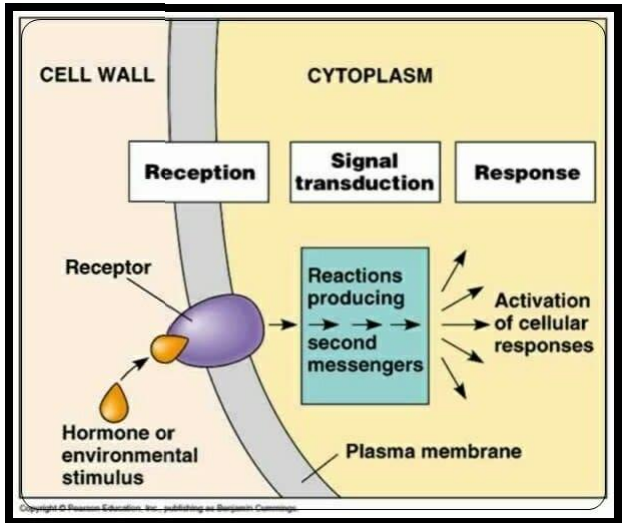
Cell Junctions
Adhesive Junctions - hold cells together
Tight junctions - form seals that block the passage of fluids between cells
Gap Junctions - allow communication between adjacent animal cells (plasmodesmata for plant cells).
Fluid Mosaic Model
Membrane as two fluid layers of lipids with proteins within and on the layers
Fluid because lipids and proteins easily move laterally in the membrane
mosaic because there are proteins within the membrane
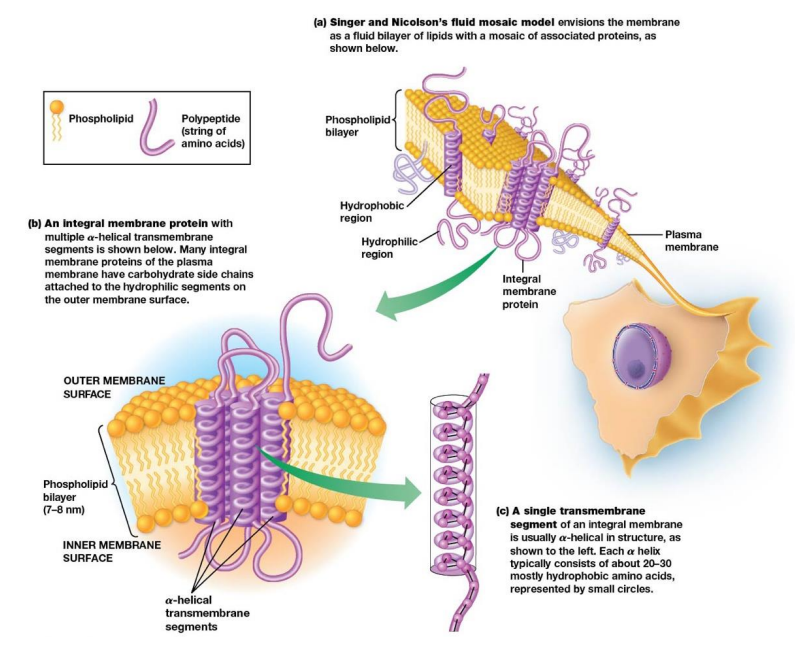
3 Main Classes of Membrane Lipids
Phospholipids
Glycolipids
Sterols
Sterols
Most eukaryote membranes have plenty
Cholesterol
Phytosterols (plants)
Not Found in Most Bacteria
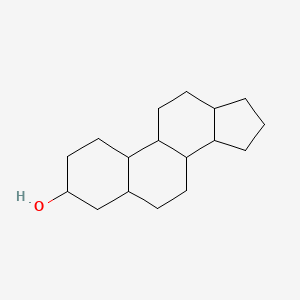
Fatty Acids
Components of all membrane lipids (excluding Sterols)
Hydrocarbon tails bar polar solutes from diffusing
Saturated - no double bonds
Unsaturated - double bonds
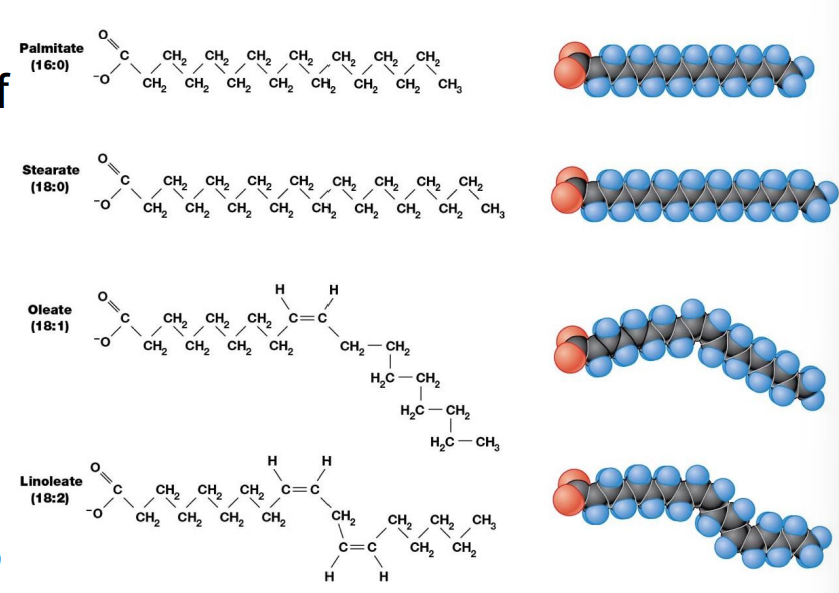
Membrane Asymmetry
Difference between the monolayers regarding the kind of lipids present and the saturation of fatty acids in the phospholipids
Ex: Most glycolipids in animal cells are out the outer layer of the plasma membrane.
Lipid Mobility
Rotation - Phospholipids can rotate about their axis
Lateral Diffusion - Can move WITHIN the monolayer
Rotation and Lateral Diffusion are both rapid and random
Transverse Diffusion (flip flop) - movement of lipids from one monolayer to another requires their hydrophilic heads to move all the way through the hydrophobic interior of the bilayer.
Protein Catalyzes for Transverse:
Phospholipid Translocators AKA flipasses, floppases, and scramblases
Flippase - outer to inner leaflet
Floppases - inner to outer leaflet
Scramblases - both switching sides at same time
FRAP
Fluorescence Recovery After Photobleaching
Demonstrates Lateral Diffusion

Factors Regulating Membrane Fluidity
Temperature (mainly depends on this)
Fluidity Increases as temp increases
Fatty Acid Structure
Saturation:
Saturated - less membrane fluidity
Unsaturated - more membrane fluidity
Length of Hydrocarbon Tail:
More fluidity when less hydrocarbon length
Less fluidity when more hydrocarbon length
Sterols
Fluidity Buffer:
Rigidity prevents membrane fluidity at higher temp
Rigidity prevents phospholipids packing close together and reduces the tendency to gel cal cooler temperature
Sterols decrease permeability of membranes to ions and small polar molecules
Fill spaces between the hydrocarbon chains of phospholipids
Liquid Crystal v Gel states
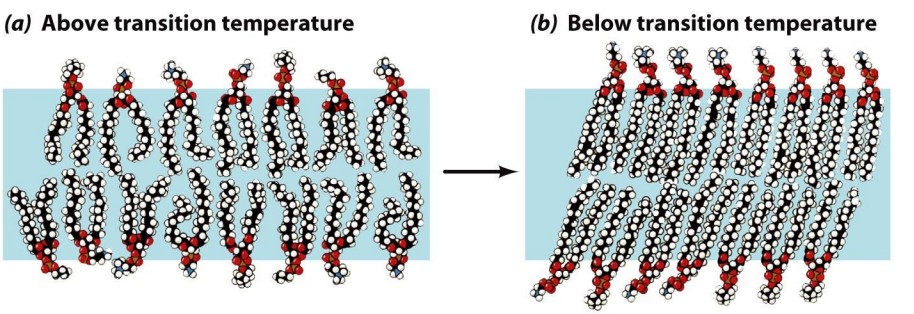
Fatty Acid Saturation and Packing
Most fatty acids vary in chain length and degree of saturation to ensure that membranes are fluid at physiological temperatures
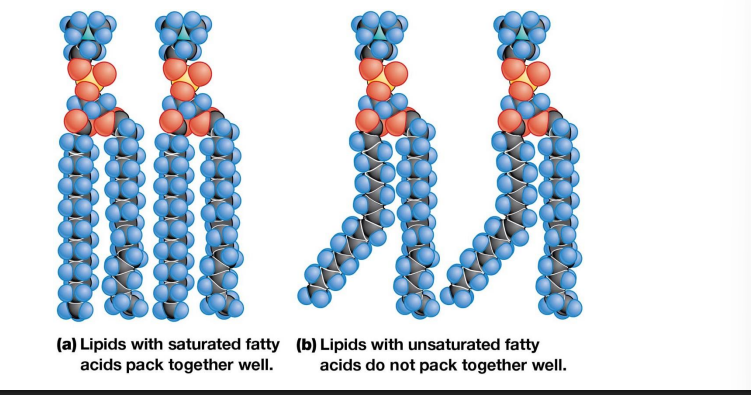
Homeoviscous Adaptation
Compensating for changes in temp by altering the length and degree of saturation of fatty acids in their membranes.
Freeze Fracturing
Bilayer is frozen and hit with diamond knife and the resulting fracture follows the plane between the 2 layers of membrane lipid
showed globular proteins
Evidence for fluid mosaic model
Classes of MP
Integral - proteins embedded in the lipid bilayer
Peripheral - hydrophilic and located on the surface
Lipid Anchored - hydrophilic and attached to bilayer by covalent attachments to lipid molecules embedded in bilayer.
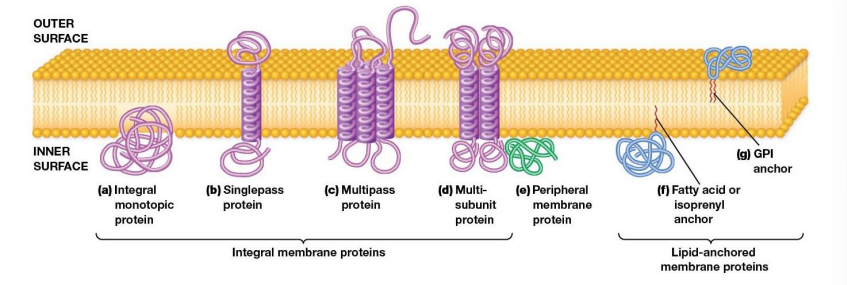
Integral Proteins
Possess one or more hydrophobic regions with an affinity for the interior of the lipid bilayer.
Can only be extracted by dissolving membrane to get them out
Integral monotopic proteins - embedded in just one side of bilayer
Most are however Transmembrane proteins that span the membrane and protrude on both sides
Can cross once (singlepass) or several times (multipass)
Peripheral Membrane Proteins
Lack discrete hydrophobic regions and do not penetrate lipid bilayer
bound to membrane surfaces through weak electrostatic forced and hydrogen bonds (potentially also hydrophobic residues)
Can be removed by changing pH or ionic strength
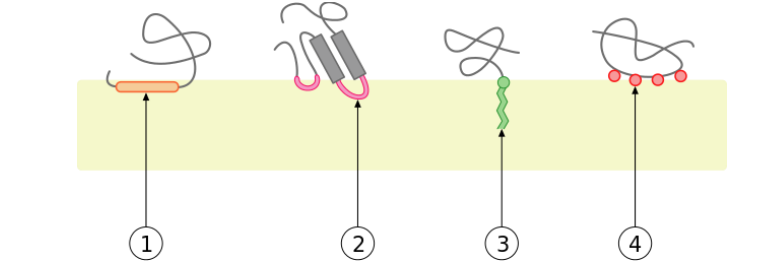
Lipid Anchored Membrane Proteins
Covalently bound to lipid molecules embedded in the bilayer
Those bound to the inner surface are linked by fatty acids (prenyl groups)
Hydropathy Plots
used to determine the # and location of transmembrane segments in a membrane protein which can be inferred if the protein sequence is known.
Calculate a hydropathy index for successive “windows” along the protein
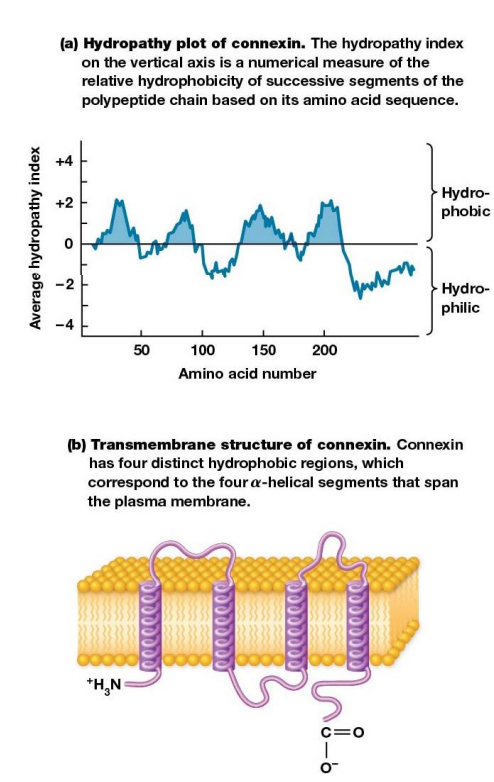
Membrane Protein Function (Part 2)
Enzymes
Electron Transport Proteins - involved in energy production
Transport proteins - nutrients
Channel proteins - hydrophilic passageways
Transport ATPases - uses ATP to transport ions
Receptors - recognize outside stimuli
Membrane Protein Asymmetry
Asymmetric orientation with respect to lipid bilayer
Once in place they cannot move across the membrane from one surface to another
All of the molecules of a particular protein are oriented the same way in the membrane
Glycosylation
Glycoproteins - membrane proteins with carbohydrate chains covalently linked to amino acid side chains
The addition of carbohydrate side chain to a protein is called glycosylation
Can be to the nitrogen atom of an amino group
Can be to the oxygen atom of a hydroxyl group
Can be either straight or branched
Play a role in cell-cell recognition and often forms protective barrier (glycocalyx)
Membrane Mobility
More variable than lipids in their ability to move freely within the membrane
Some constrained some can move freely
Cell fusion experiments proved mobility (David Frye and Michael Edidin).
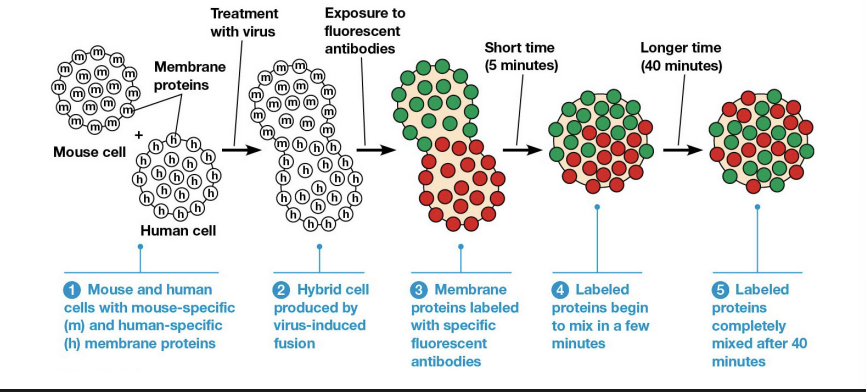
Membrane Domains
Differ in protein composition and function
Lipid Rafts
Structures that become barriers to diffusion
Lipid Rafts
Lipids of certain types self associate and MPs of the right size and electrostatics can partition to the lipid domains.
Sphingolipids and cholesterol are particularly prone to domain formation
Form distinct membrane identities
Erythrocyte
Meshwork of peripheral and integral membrane proteins
Membrane System
Supports the membrane, helps maintain cell shape, and helps cell withstand stress.